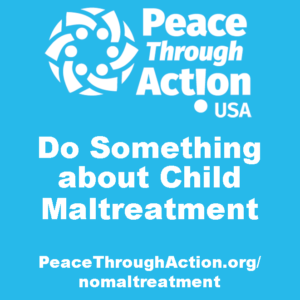What is child maltreatment?
Child maltreatment is any recent act or failure to act on the part of a parent or caretaker which results in death, serious physical or emotional harm, sexual abuse, or exploitation; or an act or failure to act, which presents an imminent risk of serious harm.[1] Maltreatment includes physical abuse, sexual abuse, emotional abuse, and neglect.
[1] NSPCC, 2017, “Neglect.” nspcc.orge.uk. p. 1. https://www.nspcc.org.uk/preventing-abuse/child-abuse-and-neglect/neglect/
How widespread is child maltreatment in the United States?
- In 2021, 600,000 victims of child maltreatment were reported to public authorities.[2]
- In 2021, 8.1 of every 1,000 children in the population were victims of maltreatment.[3]
- In 2021, it is estimated that 1,820 children died of maltreatment.[4]
[2] U.S. Department of Health & Human Services, Administration for Children and Families, Administration on Children, Youth and Families, Children’s Bureau. (2017). Child Maltreatment 2021. Retrieved from https://www.acf.hhs.gov/cb/report/child-maltreatment-2021
[3] Ibid.
[4] Ibid.
What culture changes and public policies are necessary for preventing child maltreatment?
S0ciety must hold and demonstrate high value on children. We must foster and sustain a collective sense of shared responsibility for our young society members. The U.S. Department of Health and Human Services Administration for Children and Families recommends that child maltreatment can be prevented through collaboration among social service, public health, education systems, law enforcement, and the courts working with the neighbors, family, friends, and local agencies that support children.[5]
Public policies that contribute to preventing child maltreatment include strengthening economic support for families, creating family-friendly work policies, providing preschool enrichment with family engagement, and funding substance use and mental illness treatment for parents and caregivers.[6]
[5] U. S. Advisory Board on Child Abuse and Neglect. (1995) A Nation’s Shame: Fatal Child Abuse and Neglect in the United States. Department of Health and Human Services Administration for Children and Families. Washington, DC.
[6] Prevent Child Abuse America. (N.d.). Preventing Child Neglect. Retrieved from http://preventchildabuse.org/resource/preventing-child-neglect/
What practical solutions are effective for child maltreatment?
Practical solutions to child maltreatment include creating public awareness campaigns to sensitize community members to the risk factors for and signs of maltreatment, enhancing parenting skills to promote healthy child development, and training people in caregiving roles and community members on how to intervene to lessen harm and prevent future risk to children.[7] Community members must take proactive action such as by helping their neighbors with parenting concerns and providing respite for parents and caregivers.[8]
[7] CDC Child Abuse and Neglect: Prevention Strategies. Retrieved from: https://www.cdc.gov/violenceprevention/childmaltreatment/prevention.html
[8] Linkenbach, J. (2017). Prevention Creates the Future. Retrieved from: http://preventchildabuse.org/resource/prevention-creates-the-future-by-transforming-culture-dr-jeff-linkenbach/
What can I do to prevent or stop child maltreatment?
- Learn and Apply—the five steps to protect children recommended by Darkness to Light. 1. Learn the facts. 2. Minimize opportunity. 3. Talk about it. 4. Recognize the signs. 5. React responsibly.
- Help a Family—If you are qualified by training or experience to mind a child, offer your help to a family in your neighborhood or community with need for brief respite from caregiving.
- Report It—If you suspect or can confirm an instance of child maltreatment, report it to a public child protection authority. The most efficient way of doing so is to call the Childhelp USA National Child Abuse Hotline at 1-800-4-A-CHILD (1-800-422-4453).
- In Case of Emergency—If you are witnessing a child being actively abused or otherwise harmed, call 911 or try to get to a location where others can observe your distress and intervene.
Where can I find statistics about child maltreatment?
For data and statistics about child maltreatment, go to:
Where else might I go to learn more about child maltreatment?
- The American Society for the Positive Care of Children helps raise public awareness of the epidemic of child abuse, neglect, maltreatment, exploitation, and bullying.
- The Child Welfare Information Gateway provides information, resources, and tools covering topics on child welfare, child abuse and neglect, out-of-home care, adoption, and more.
- Kids Matter Inc. brings volunteer energy and community support to foster and kinship children and applies lessons learned from helping children heal to preventing further child abuse.
Information Sheet-Do Something-Child Maltreatment (PDF)
Have a suggested improvement to this information sheet? Send it to inbox@peacethroughaction.org
Do Something Right Away to Increase Peace
Subscribe to our YouTube channel
Give a gift of money to support our mission delivery activities
Choose opportunities to take part in our #PeaceBeginsWithWe campaign

